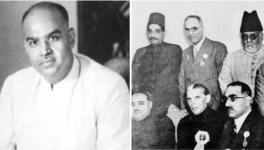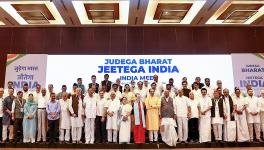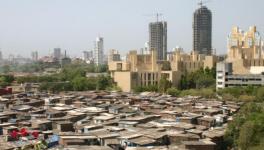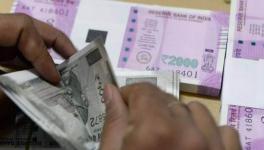British Raj to Billionaire Raj – India’s Journey into Neoliberalism
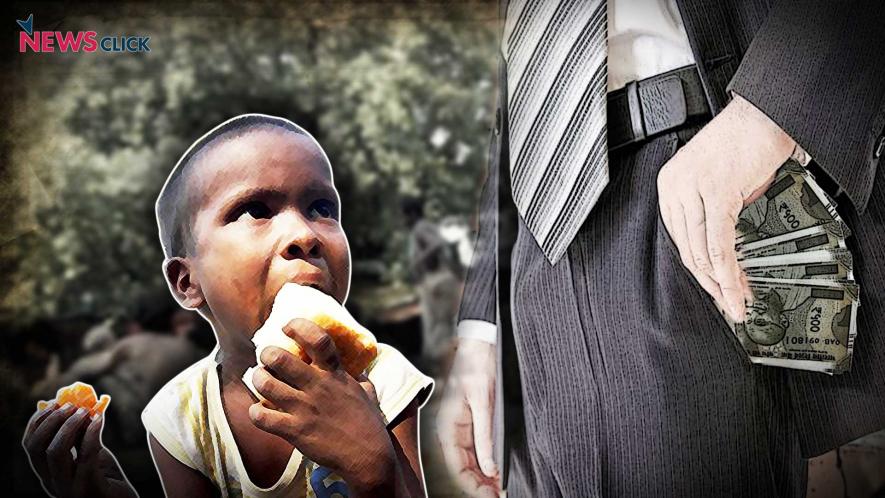
Newsclick Image by Nitesh Kumar
The world inequality report, 2018 which is going to be launched in India today, generated a serious debate across countries, on the increasing inequalities around the world. The report gives plenty to chew on, for the Indians as well. According to it, India is among those countries, along with the US, China and Russia, where the inequalities have grown rapidly since the 1980s.
The world wealth and income database, on which the report is based, shows that the share of top 1% of the population in India’s income has increased from about 6% in 1983 to 22% in 2014. In a reversal of fortunes, the share of bottom 50% of the country’s income fell from about 24% in 1983 to 15% in 2014.
Income Inequalities fell in Post-Independence India
Chancel and Piketty, who have calculated the inequality data for India, point out that – inequalities reduced sharply in India in the post-independence period from 1951 to 1980, because of various progressive economic policies that were adopted by the Indian governments after independence.
Indian government nationalised railways in 1951 and air transport in 1953, taking them away from the hands of the private capital. Subsequently, in the 1960s and 1970s, almost all of the banking sector and the oil industry were nationalised, along with many others. These reforms have allowed the government to redistribute income into the hands of the working class and the peasantry, that would have otherwise gone into the coffers of the rich industrialists
The growth of income in the post-independence period (from 1951 to 1980), went overwhelmingly to the toiling masses of this country. In these 3 decades, while national income grew by 67%, the incomes of the bottom sections of the population grew at an even higher rate.
The incomes of bottom half of the population grew by 87% and that of the middle 40% of the population grew by 74%. But, the incomes of the top 1% of the population grew only by 5% in this entire period of 30 years. What's more, is that the incomes of the richest, the top 0.001% of the population, have seen a negative growth rate of – 42%.
As a result, the share of top 1% which was as high as 21% of the total national income during the British colonial rule (in 1939), declined to 6% by 1983.
Neoliberalism brings back the British Raj
The sharp reduction in inequalities in the post-independence period was completely reversed with the adaption of neo-liberal policies in India. Chancel and Piketty point out that though, India’s shift to Neoliberalism officially began in 1991, such policies were initiated as early as 1984, by the then Rajiv Gandhi government – which shifts the path of economic policy to a more liberalised regime.
Opening up of the economy to foreign capital, the large-scale privatisation of the public sector, strangling of the labour laws, and the literal giving away of public resources like mines, spectrum, land, water etc., to private capital, clearly had their effect - in the form of income redistribution from the poor to the rich.
The decline in inequalities was reversed. From 1983 onwards, the share of top 1% started increasing. From 6% in 1983, their share increased to 22% in 2014, higher than even the British times.
The hollow claims of the trickle-down growth
Chancel and Picketty’s also demolishes the claims that neo-liberalism benefits to all. While the 34 years from 1980 to 2014, has seen much higher growth than previous three decades (67% vs 187%). This growth overwhelmingly went to the rich. The income of the bottom 50% only grew by 89% in these 34 years. Compare this to the growth rate of 87% for this group from 1951 to 1980.
In fact, the growth of effective incomes of the bottom 50% would be even lower, considering the gradual withdraw of the welfare state. With privatisation public transport and withdrawal of various subsidies to the poor including the universal public distribution system – the real cost of living has gone up much more in the post-liberalisation era.
The fact that this growth entirely benefited the super-rich is evident, as the incomes of the top 0.001% of the population, among whom we can list the likes of Ambanis and the Adanis, grew by 2726%.
Yes, that’s right – by 2726%. No wonder, India’s list of billionaires went from 1 to 132 in the last 3 decades. All this while, India continues to remain the home to wold largest population of malnourished children and poor people.
The myth of India’s middle class
The data underlying the World Inequality Report also debunks the myth of the so-called India’s rising middle class. Chancel and Piketty note that, in distributional terms, the middle class were much better off in first three decades than in the neoliberal growth period. The middle class (the 40% of the population below the top 10%) captured nearly 50% of the growth in the period 1951-1980. In contrast, only 23% of the growth went to this section in the period 1980-2014.
Compare this to China, which has seen similarly high growth rates in the last few decades, where the middle class (the middle 40%), captured 43% of the income growth.
Evidently middle class is not rising in India, as it is doing in China.
Get the latest reports & analysis with people's perspective on Protests, movements & deep analytical videos, discussions of the current affairs in your Telegram app. Subscribe to NewsClick's Telegram channel & get Real-Time updates on stories, as they get published on our website.









